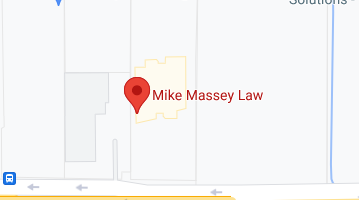How Dangerous Are a Truck’s Blind Spots?
One in every three highway truck accidents involves a truck’s blind spots. Drivers should know where these blind spots are to avoid them and to know what truck drivers can and can’t see. If you’re injured in an accident with a truck, contact a Texas truck accident lawyer immediately.
Because of their size, 18-wheelers have blind spots that are substantially larger than the blind spots on automobiles. Blind spots are on the back, front, and both sides of a truck. Truck drivers and other drivers must take abundant care to avoid blind spot-related truck accidents.
Where are the four main blind spots on an 18-wheeler? What are your rights if you are injured in a truck accident in Texas? How can you be compensated for your accident-related injuries? Keep reading this brief discussion of truck accidents and blind spots for answers to these questions.
What Should You Know About Truck Accidents in Texas?
An 18-wheeler’s momentum and weight can cause deaths and catastrophic injuries. A fully-loaded 18-wheeler may weigh over 80,000 pounds; an average automobile weighs something like 3,000 pounds.
More than 5,600 truck accidents occurred on Texas streets and highways in 2022, resulting in more than 1,200 fatalities and more than 4,800 other serious injuries. Almost every year, Texas leads the nation in truck accidents for a number of reasons:
- More 18-wheelers travel in Texas than in any other state.
- Texas has more state highway miles and interstate highway miles than any other state.
- The many oil wells, refineries, and oil companies in Texas depend on 18-wheelers.
- The ports on this state’s coast also depend on 18-wheelers.
- The interstate highways running through Texas provide access to the rest of the nation.
Where Are an 18-Wheeler’s Blind Spots?
Every driver in Texas should know about – and strive to avoid – the four large blind spots on an 18-wheeler. These blind spots are located:
- In front of the truck for about twenty feet: Truck drivers can’t see vehicles in the twenty-feet zone directly in front of the truck. Trucks need more time and distance to slow down and stop, so driving directly in front of a truck is extremely dangerous.
- Behind the truck for about thirty feet: There’s a large blind spot of thirty feet or more behind a truck, so do not drive directly behind one. If you can’t see the truck’s driver in a side mirror, that driver can’t see you.
- Under and behind the truck’s left and right side mirrors: A truck driver may not see you if you are on either side of the truck or behind it and your vehicle is below the level of the truck’s side mirrors.
When you are passing a truck, pass it on the left, because the right side of a truck is – practically speaking – one huge blind spot. After you pass a truck, do not swing immediately back in front of it. Stay in your lane until you establish a sizable distance between your vehicle and the truck.
How Can You Avoid Accidents Related to Blind Spots?
Whenever you drive, keep as much distance as you can between your vehicle and 18-wheelers. Trucks don’t have rear-view mirrors or back windshields, so a truck driver’s visibility is much more limited than an automobile driver’s. The larger a truck is, the larger its blind spots will be.
Be extraordinarily cautious when an 18-wheeler makes a turn. If a truck driver turns right, the truck will – at first – swing left. When you see this, don’t move to the truck’s right side. It will swing back to the right, and you will be trapped. The same idea in reverse applies to left turns.
If a Truck Accident Happens
Summoning medical assistance is your highest priority after a truck collision. You should also call the police to the scene, exchange personal contact and insurance details with the truck driver, and photograph the accident’s location, the damages to the vehicles, and your visible injuries.
If witnesses saw the accident, try to get their names and a way to contact them. Later, your Texas truck accident attorney may reach out for their testimony or statements.
If you are not treated at the scene or taken to a hospital, have a medical exam and treatment within twenty-four hours if possible. That medical exam will establish when, how, and to what extent you were injured. Without that exam, it will be difficult to prevail with an injury claim.
When Should You Contact an Attorney?
If you have been injured in an accident with an 18-wheeler, don’t wait. Contact the offices of a Texas truck accident lawyer immediately after you have been examined and treated by a medical provider for your injury.
That attorney will provide a free case evaluation to determine if you qualify to file a personal injury claim and recover compensation for your current and projected future medical expenses, your current and projected future lost wages, and your other injury-related losses and damages.
The statute of limitations in Texas gives you two years to file a personal injury claim after a truck accident. Realistically, you must schedule a case evaluation with a Texas truck accident attorney as quickly as possible after you’ve been examined and treated for your injury.
To develop the strongest possible personal injury claim on your behalf, your truck accident attorney needs to examine the evidence promptly and speak with any witnesses before their recollections fade.
What Else Should You Know About Your Rights?
If you have been injured by another party’s negligence in Texas, in a truck accident or any other accident scenario – or if you are injured by another party’s negligence in the future – you are entitled by Texas law to compensation.
With a free, no-obligation case evaluation from a personal injury attorney, you will receive personalized advice and learn how the law applies to your own case.
If you proceed with a personal injury claim, you will pay no upfront fee to your truck accident attorney and no fee until and unless you recover compensation. If for any reason your injury claim does not prevail, you’ll owe no fee to your truck accident attorney.
Disability and death are the end result of far too many truck accidents in Texas. Drive carefully at all times, and keep your distance from the many 18-wheelers on our state’s streets and highways.








 512-400-4430
512-400-4430 mike@mytxwills.com
mike@mytxwills.com




